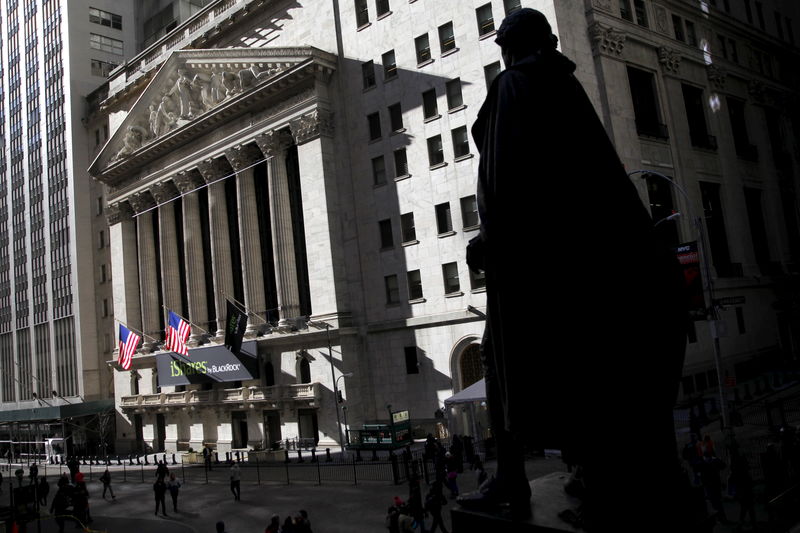By Richard Leong
(Reuters) - Traders and analysts are considering whether U.S. bond yields would fall below zero as a record amount around the world sank into negative territory this week.
The question has become a talking point, and less hypothetical, this week as the U.S. 30-year Treasury bond yield reached the brink of breaking to record lows.
Negative yields have become a mainstay in Europe and Japan, abetted by their central banks' negative-rate policy.
The United States is expected to avoid this fate, analysts say, but it can no longer be ruled out.
"It is no longer absurd to think that the nominal yield on U.S. Treasury securities could go negative," Joachim Fels, PIMCO's global economic adviser, wrote on Wednesday in a blog post.
On Friday, the 10-year yield on U.S. Treasury notes was 1.73% compared with -0.568% on German Bunds and -0.218% on Japanese government securities.
Interest rates on U.S. Treasury bills went negative in 2015. That happened because of expectations the Federal Reserve was sticking to its near-zero rate policy into the following year due to global economic worries.
RECESSION, FED
For U.S. yields to turn negative for an extended period, a key factor would be whether there is U.S. recession, analysts said.
Steps taken by China and the United States since last week are seen bringing them closer to an all-out trade war that threatens the global economy and financial markets.
Moreover, the Fed Reserve would have to cut rates to near or below zero and restart its quantitative easing program to combat an economic downturn, analysts said.
"We doubt the Fed leadership would seriously entertain the idea now," Wells Fargo (NYSE:WFC) Securities strategists wrote in a research note.
The European Central Bank and Bank of Japan have had little to show for adopting negative rates in 2014 and 2016, respectively, to help their economies. While negative rates help borrowers, they have hurt banks and investors.
Fears about a U.S. recession intensified after President Donald Trump last Thursday threatened to impose a 10% tariff on $300 billion of Chinese imports beginning Sept. 1.
The U.S. bond market's most reliable indicator of a pending recession hit its most alarming level in 12-1/2 years this week.
The premium on three-month bill rates above 10-year note yields reached 40 basis points on Wednesday, the highest since March 2007, before subsiding to 29 basis points on Friday.
The inversion between these two maturities has preceded U.S. recessions in the past 50 years.
Graphic: U.S. yield curve inversion - http://tmsnrt.rs/2zUqXiW
SAFE-HAVEN BIDS FOR BONDS
Nervousness about the longest-ever U.S. expansion coming to an end set off a safe-haven stampede into Treasuries, German Bunds and UK gilts as well as yen and gold up and a simultaneous dumping of stocks and other risky assets.
This dramatic shift resulted in record $13.2 trillion worth of negative yielding bonds around the world on Wednesday, according to J.P. Morgan.
With the U.S. economy still expanding and the Fed having a some room to cut rates before hitting zero, traders believe U.S. yields will not turn negative anytime soon.
"At this point, we are not going to see it," said Mary Ann Hurley, vice president of fixed income at D.A. Davidson in Seattle.
Still prospects of negative U.S. yields will unlikely disappear soon.
"Never say never," Wells Fargo strategists said.
Graphic: European, Japanese bond yields - https://tmsnrt.rs/2FKutOn
